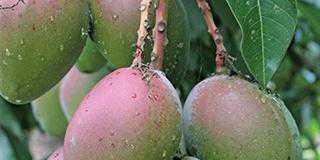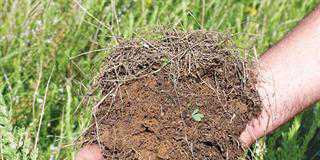Soil health can take a beating under intensive monocropping year after year. Soil organic matter content suffers and the soil may become compacted, hampering water filtration and root establishment.
However, introducing a ley pasture as rotation crop can give the soil a new lease on life. “A ley pasture gives soil that had been continuously cultivated a chance to restore itself,” says Dr Wayne Truter, rangeland, forage and reclamation specialist at the Department of Plant Production and Soil Science at the University of Pretoria.
“It can be incorporated into any cropping system, such as intensive maize and soya bean crops, where the soil needs time to rest and rejuvenate. Ley crops can also reduce the high levels of herbicides and fertiliser often used on cash crops.
“Some farmers use annual ley crops very effectively in a rotational system. They plant them in winter to protect the soil against weeds. Come the new growing season, they plough them in as green manure or harvest them for stock feed. The next crop goes straight in.”
Ley pasture in action
A ley pasture works on a number of fronts. As a pasture, the crop’s vigorous root system penetrates compacted soil and often alleviates soil crusting.
The deep roots can break through deeper layers of compacted soil. Better soil tilth improves water infiltration and reduces evaporation.
Crop-specific diseases can build up during monocropping, but a ley pasture can reduce disease pressure by breaking the pathogen’s life cycle. However, some diseases can be transferred.
For example, lucerne can host Phytophthora root rot, which can infect subsequent chickpea crops. A ley crop also provides ground cover and good quality roughage or green manure, returns organic matter to the soil and helps control weeds.
“Soil health is improved by providing organic matter both above the ground in the form of litter and green manure, and below it through increased root mass,” says Dr Truter.
“A ley crop also provides nutrients for beneficial soil micro-organisms, which in turn improve the crop’s nutrient uptake.”
Picking a ley crop
A range of legumes and grasses can be used as ley crops, although the species must be carefully selected to suit site-specific soil and climatic conditions.
Two important perennial ley grasses are weeping love grass (Eragrostis curvula) and Smuts finger grass (Digitaria eriantha). Others include Rhodes grass (Chloris gayana), wool grass (Anthephora pubescens) and guinea grass (Panicum maximum).
Important annual ley grasses are pearl millet (Pennisetum americanum), forage sorghums (Sorghum spp.) and Japanese millet (Echinochloa esculenta). For winter planting, annuals include oats (Avena sativa), triticale (Triticosecale spp.) and bunch rye (Secale cereale).
Annual legume crops include cowpeas (Vigna unguiculata), lablab beans (Lablab purpureus), lupins (Lupinus spp.) and sunn hemp (Crotalaria juncea). Perennial legume crops include lucerne (Medicago sativa), siratro (Macroptilium atropurpureum) and birdsfoot trefoil (Lotus corniculatus). Clover species can be either annual or perennial.
The type of pasture planted will depend on how long the land can be taken out of production. “If the soil is very broken down and needs a long time to recover, a longer-term perennial species suited to the environment might be indicated,” says Dr Truter.
Cash in without cash crops
Many farmers avoid ley pastures because they’re reluctant to take land out of cash crop production for any length of time.
“Yet there are many benefits to doing just that,” Dr Truter explains. “Soil enrichment can raise yields in following crops and allow them to better tolerate adverse conditions. For direct economic benefit, you can use the crop as good quality roughage for livestock.” Income derived from grazing the ley crop may offset the cost of establishing it.
Alternatively, a ley crop can be conserved as dry matter in the form of good quality hay, silage and protein. An oats ley crop yielding from 1,5t/ha to 3t/ha can provide 3,9% protein. The expected direct returns of a hay pasture range from R1 200/t for weeping love grass to R2 200/ha for lucerne and R1 200/ha for Smuts finger grass.
A legume has the added benefit of nitrogen-fixing. “A legume pasture can fix nitrogen at between 75kg/ha and 350kg/ha and foster a healthy soil microbiology with Mycorrhiza,” Dr Truter points out. “These microbes make the most of the nitrogen readily available to plants. The nitrogen the legumes fix will increase future crop yields for several years, depending on the duration of the legume ley.”
While grasses don’t fix nitrogen, they produce stock feed and organic matter and improve the pasture’s productivity.
A new production system
Planting a ley crop does mean adapting to a new production system. The first imperative is to understand the environmental conditions of the soil and site, and select the most suitable species for the conditions and purpose. South Africa’s climate varies so much that there are no recipes to follow. “You have to understand your system and make sure you have the correct species for it,” Dr Truter points out.
A pasture ley crop must be managed differently to a highly productive pasture. If it’s grazed or harvested at the wrong time of the growing season, it won’t benefit the soil. “Management must be geared to getting the full advantage of the ley crop. The idea is to stimulate root development and build up the organic matter in the soil,” says Dr Truter. Optimise the management with that in mind.
If you graze a ley crop, graze it properly. If you fertilise and irrigate, use a species that can use water and fertiliser efficiently. It doesn’t help if you select a pasture species that needs to be cut and you don’t have the equipment to do so. “If you have cattle, make sure you use a pasture species that they can graze on the land,” he says.
While a ley pasture can out-compete with and suppress weeds, you should control weeds during its establishment phase as young pastures are vulnerable to weed competition. “The ultimate purpose of a ley crop is soil conservation. There are added benefits if you can access alternative markets or utilise the crop economically, but the goal should always be to give the soil a chance to restore itself,” Dr Truter concludes.
Contact Dr Wayne Truter on 012 420 3226 or email [email protected].













